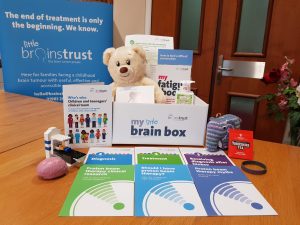Refer a patient or caregiver for brain tumour support
Why signposting support matters
“If we can reach people close to the point of diagnosis, we know our coaching and support has a greater impact”– Will Jones, chief executive at brainstrust
 We know that when people are diagnosed with a brain tumour, they need support at home.
We know that when people are diagnosed with a brain tumour, they need support at home.
This needs to come from people who understand the fear, confusion and isolation, and who can empower and resource them to overcome it.
Working with healthcare professionals, we can ensure that people affected by a brain tumour receive comprehensive support.
“Healthcare professionals are important gatekeepers in linking patients with the relevant charities for their needs. Our past research has shown that 69% of the public agree that they would be more likely to go to a charity for information about a health condition if a nurse, GP, or consultant recommended it[1]. This emphasises the essential role that healthcare professionals play in getting people to access key information and services from charities”– nfpSynergy, 2018
There are 3 things you can do to signpost your patients and their families.
- Signpost our work by sharing our details
- Share literature and information
- Make a direct referral
Share our helpline information
People can access brainstrust’s impactful support and information 24/7. Call us on 01983 292405, visit www.brainstrust.org.uk or email hello@brainstrust.org.uk.
Please share this information with your patients. You can copy this information into an email or text message
You can also request simple leaflets to be shared with your patients, email hello@brainstrust.org.uk.
 Share literature and information
Share literature and information
brainstrust information is produced with expert clinical and scientific collaborators and in line with our accredited Information Standard process. You can provide an overview of our services to your colleagues and patients by sharing the braintrust support catalogue (linked below), or share specific resources from our resources and downloads page which is also linked from the button below.
Refer someone for support directly
If you would like to sign-post one of your patients or caregivers, please do so using the form below. To complete the form you must have their consent, and have shown them where to access our privacy policy: https://brainstrust.org.uk/privacy/
Our support is available to everybody in the UK with any type of brain tumour, and their friends and families.
If you complete the form, we will send the patient or caregiver our welcome email, introducing our service.









